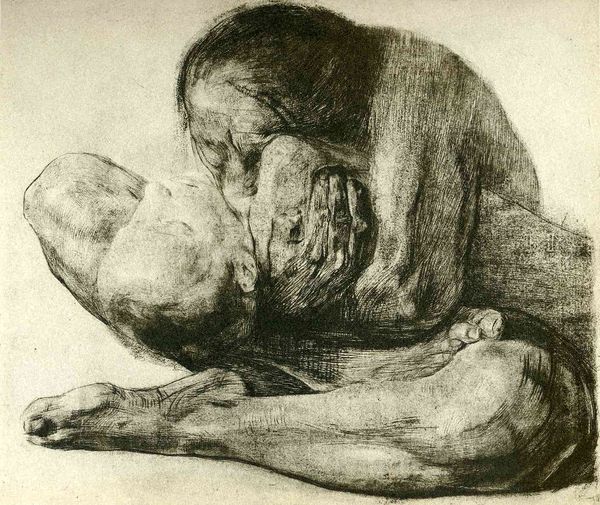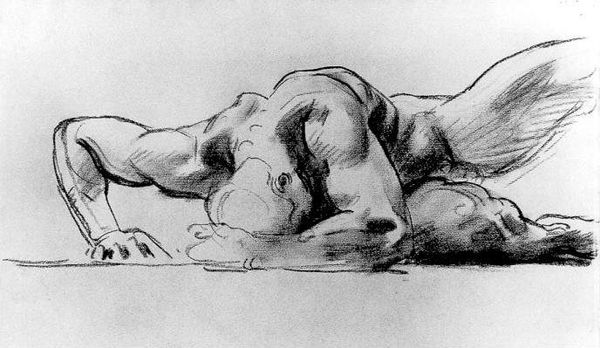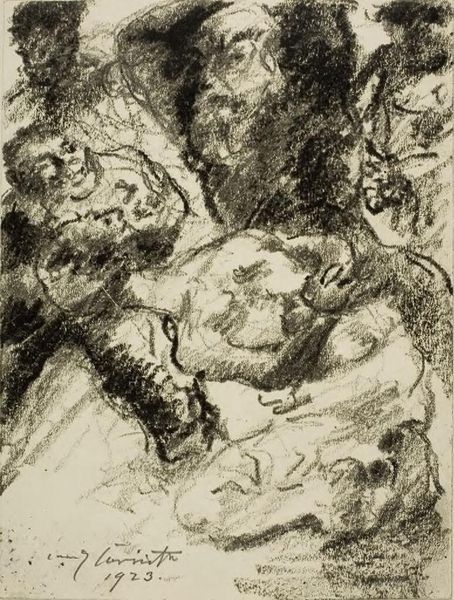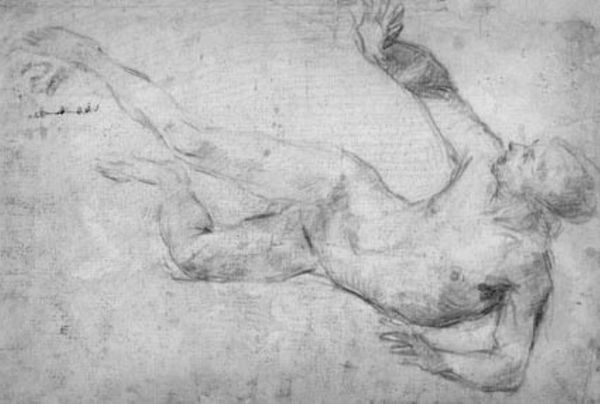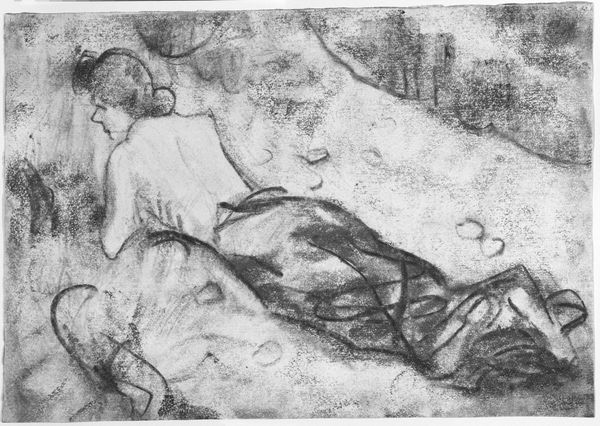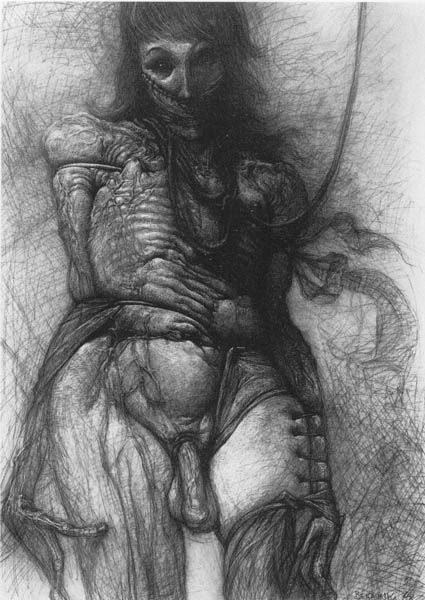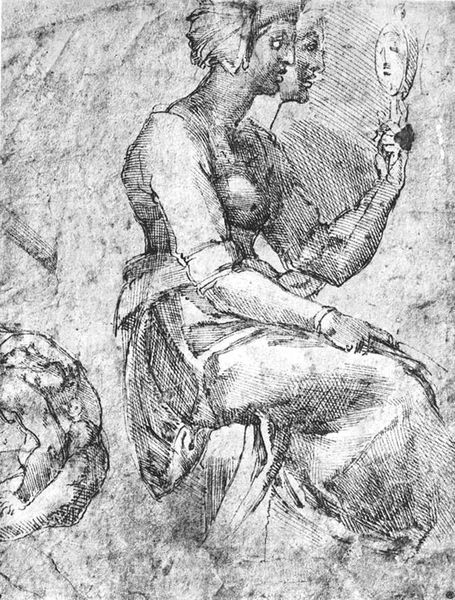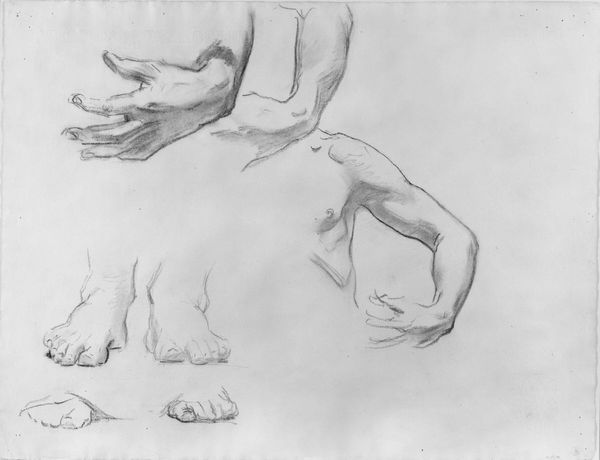
drawing, pencil
#
pencil drawn
#
drawing
#
pencil sketch
#
charcoal drawing
#
figuration
#
11_renaissance
#
pencil drawing
#
sketch
#
pencil
#
academic-art
#
italian-renaissance
#
nude
#
male-nude
Copyright: Public domain
Editor: This drawing, "Study of Three Male Figures (after Raphael)" by Michelangelo, was made around 1530 using pencil. I’m immediately struck by how these figures seem entangled, almost struggling with one another. What do you see in this piece? Curator: I see a work deeply embedded in the social and political context of the Renaissance, particularly regarding the male body and power. Michelangelo's choice to study Raphael, his rival, through the depiction of male nudes is telling. The bodies aren’t simply aesthetic forms; they represent ideals of masculinity and strength that were crucial to the construction of Renaissance identity. Think about the role of the male nude in asserting dominance and control, both politically and artistically. Editor: So, it's not just about the artist improving their skill, but also about claiming power? Curator: Exactly. And consider the gaze here. Who is the intended viewer? In that historical moment, it would have certainly been a wealthy, educated, heterosexual man, likely someone connected to the centres of political or religious authority. This brings in questions of gender and sexuality, revealing the complexities within the social hierarchy of that time. How do you think we can challenge the historically-constructed viewer through our interpretations of this piece today? Editor: That’s fascinating. I always focused on the artistic technique but hadn't considered the social implications behind it. Curator: Thinking intersectionally, how do race and class affect our understanding of the drawing? Editor: That’s true! Considering who was able to access and commission art in that period… it completely changes how you view the power dynamics represented here. I will definitely reflect more on the societal implications rather than focusing on simply composition or aesthetic. Thanks for sharing. Curator: Precisely. Hopefully it will encourage you to look at how power, gender and identity shaped not just what art was created, but how art was accessed and valued in its historical moment.
Comments
No comments
Be the first to comment and join the conversation on the ultimate creative platform.
